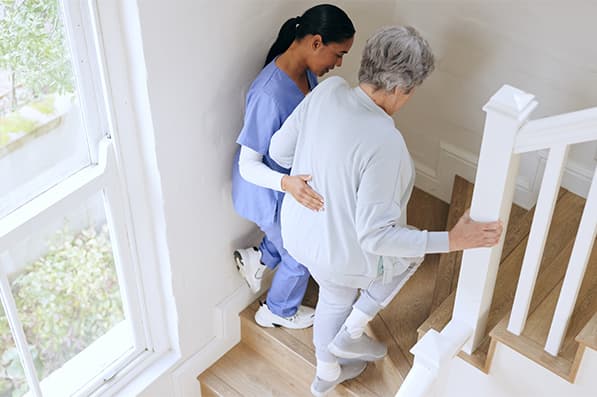As our population ages, the issues of loneliness and safety risks among the elderly have become increasingly prominent. Family caregivers, who often bear the responsibility of ensuring the well-being of older adults, are acutely aware of these challenges. This article aims to shed light on the correlation between loneliness and safety risks, and provide actionable insights to help caregivers navigate this complex landscape.

Understanding Loneliness in the Elderly
Loneliness is more than just a feeling of being alone; it can have profound implications on an elderly person’s physical and mental health. Many seniors face isolation due to factors such as the loss of a spouse, children moving away, or reduced mobility. This loneliness can lead to depression, anxiety, and a decline in overall health.
The Health Implications of Loneliness
Research has shown that loneliness can be as detrimental to ones health as smoking or obesity. It can lead to higher blood pressure, heart disease, and a weakened immune system. Mental health is also significantly affected, with increased risks of depression and cognitive decline.
Safety Risks Faced by the Elderly
The safety risks that accompany aging are numerous and varied. These include falls, accidents in the home, and difficulties in managing medications. Laundry safety and maintaining a secure living environment are just a couple of the daily challenges that seniors face.
Falls and Their Consequences
Falls are one of the most common and dangerous safety risks for the elderly. They can lead to serious injuries such as fractures and head traumas. The fear of falling can also contribute to a cycle of inactivity and increased dependence on others.
Home Safety Concerns
Ensuring the home is a safe place for seniors is critical. Simple measures like installing grab bars, improving lighting, and using voice-activated devices can significantly reduce risks. Home safety tips can offer additional guidelines on making environments safer for older adults.
Link Between Loneliness and Safety Risks
There is a strong connection between loneliness and increased safety risks. Isolated seniors are less likely to have someone to notice changes in their health or living conditions that could lead to accidents. They might also be less inclined to seek help when they need it, exacerbating potential risks.
Addressing the Issue
Family caregivers play a crucial role in mitigating these risks. Regular check-ins, either in person or through technology, can help monitor the safety and well-being of elderly loved ones. Encouraging social activities and community engagement can also reduce feelings of isolation.
Improving Social Connections
Building and maintaining social connections is vital for the elderly. Community centers, clubs, and online forums can provide opportunities for interaction and companionship. Encouraging participation in community events can also help alleviate loneliness.
Community Support Programs
Many communities offer support programs specifically designed for seniors. These can include meal delivery services, social gatherings, and transportation options to help maintain independence and reduce loneliness.
Technology as a Tool
Technology can be a valuable ally in combating loneliness and improving safety. Devices like Alexa for elderly can assist with daily tasks, provide reminders, and offer a sense of companionship.
Smart Home Solutions
Smart home technology can enhance safety by automating lighting, controlling temperatures, and alerting caregivers to unusual activity. These solutions can provide peace of mind for both seniors and their families.
Role of Caregivers
Caregivers are instrumental in ensuring the well-being of elderly individuals. Their role extends beyond physical care to include emotional support and advocacy for safe living environments.
Training and Resources
Caregivers can benefit from training and resources that equip them to handle the challenges of elderly care. Workshops and online courses can offer valuable skills and knowledge.
Conclusion: A Call to Action
Addressing the issues of loneliness and safety risks in the elderly requires a comprehensive approach involving family, community, and technology. By fostering connections and creating safe environments, we can significantly enhance the quality of life for our senior loved ones.

FAQs
What are common signs of loneliness in the elderly?
Common signs include withdrawal from social activities, changes in appetite or sleep patterns, and increased dependence on others.
How can technology help reduce safety risks in seniors?
Technology can provide reminders for medications, alert caregivers to emergencies, and help monitor the home environment for hazards.
What role can family play in reducing loneliness?
Families can help by staying connected, encouraging participation in social activities, and ensuring regular visits or communication.
This article contains affiliate links. We may earn a commission at no extra cost to you.






